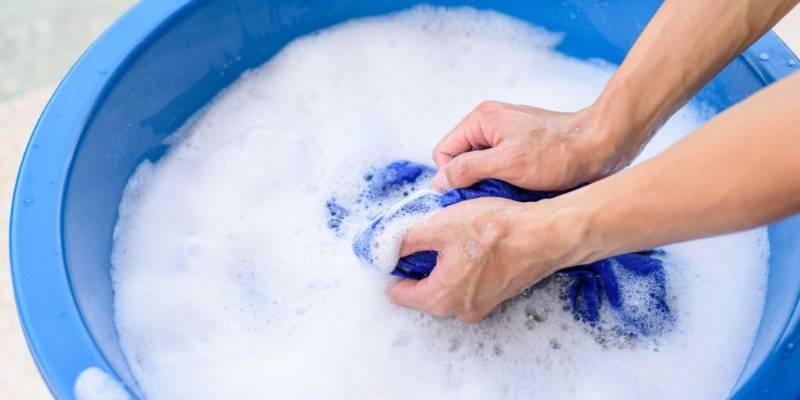How to Wash and Care A Hammock – Ultimate Guide
Hammocks are known for being incredibly comfortable, compact, and practical, serving as mobile relaxation havens that appeal to both children and adults alike. However, it can be quite frustrating when a stain mars the pristine fabric of the hammock, and this often happens sooner than expected.
Whether it’s potting soil, fruit juice, or chocolate ice cream, stain devils seem to lurk everywhere, ready to tarnish the beauty of your hammock. Fortunately, with the right tricks, tackling stains doesn’t have to be a daunting problem.
In this guide, we’ll provide you with insights on how to wash and care for your hammock properly. Additionally, we’ll share some tips on safeguarding it from stains through the right care practices. And let’s not forget the importance of caring for the hammock stand to ensure the longevity of your entire relaxation setup.
To Wash or Not to Wash – That is the Question
Of course, a hammock is a commodity. You can hardly avoid stains and dirt in the long run. In order for your hammock to shine in new splendor after a long period of use, a thorough wash is usually unavoidable.
We recommend that you always follow the manufacturer’s washing instructions. This is either in printed form in the packaging or is sewn into the hammock in the form of a small piece of paper. There you will find the corresponding washing symbols. These provide information about whether the hammock is machine washable at all and at what temperature it can be washed.
It Doesn’t Always Have to be Hand Washing

Many manufacturers expressly recommend hand washing in their washing instructions. So if you’re unsure, follow this advice. However, we know from experience that cotton hammocks are much more durable. If the washing machine is set accordingly, gentle machine washing is not a problem for most hammocks.
Pay attention to the following points, which apply to almost all hammocks:
- Always wash your hammock alone and not together with other fabrics or clothing.
- Never set the temperature of your washing machine to more than 30 degrees.
- If possible, use the program for delicates.
- Use mild detergent when washing. Alternatively, it can also be a gentle hair shampoo.
- Limit the spin speed to a minimum. Even better: switch off the spin cycle completely.
Even though most hammocks can withstand a few machine washes without any problems, using the washing machine is at your own risk! With the manufacturer’s washing instructions, you’re always on the safe side.
If you still choose to wash by hand, it is best to do it in the sink or bathtub. If your sink isn’t big enough, you can also use a laundry tub as a makeshift sink. The water should not be warmer than 30 degrees.
A Hammock is Not Just a Hammock
You can’t treat all hammocks the same: there are differences depending on the design and the material used. While you have to make more preparations for some shapes, such as stick hammocks, feather-light travel hammocks are extremely easy to care for.
Wash the Cloth Hammock

Cotton hammock or cloth hammock is the classic model among hammocks. Since it doesn’t have a permanently attached stick, you can easily wash it by hand or in the washing machine. The most important thing here is that the cords do not get knotted – both when washing by hand and when spinning in the machine.
A laundry bag is an incredibly practical tool to prevent the worst twisting. In addition, you should roughly secure the individual strands by knotting them carefully. In the worst case, the untangling will at least not take that long.
If you don’t have a laundry bag or don’t want to buy a laundry net, you can simply grab a pillowcase. Ideally, you choose a cover that you can close with a zipper. You can then wash your hammock according to the manufacturer’s instructions. The following combination usually removes even the most stubborn stains: 30-degree warm water, mild detergent, and gentle cycle.
Wash Net Hammock

If you’ve ever had the pleasure of untangling a completely tangled net hammock, you know this: it’s no fun at all. And the equation is simple: the coarser the stitches, the more work awaits you. So it’s a good thing that you only have to wash your net hammock in exceptional cases.
This is for the following reasons:
- The narrow mesh fabric offers little contact surface, so less dirt gets caught. At the same time, individual spots are less noticeable.
- Due to the mesh size, a net hammock is always very well-ventilated. This means that the material absorbs very little sweat, even in midsummer.
If you have to wash your net hammock, hand washing is a good idea. With the right preparation, you prevent the parts of the net from getting tangled up in each other. To do this, carefully fold your hammock and fix it with rubber bands at intervals of a good 10 centimeters. You can then place the net hammock in a bathtub prepared with lukewarm water and mild detergent and treat it by hand.
Wash Stick Hammock

Washing a stretcher hammock is a challenge. Because if the rod cannot be removed, washing in the washing machine is not possible. But the rod would also be extremely annoying when washing by hand. So, first of all, remove the staff if you can. Apart from this little thing, you can wash your stretcher hammock like a cloth hammock without a stretcher.
The real challenge is restoring it to its original state. After all, with many models, you have to put the cords back into their correct position. Pro tips: Take a photo before washing – this saves you time-consuming experiments afterward. To make your work easier, you should reattach the strings to the holding rods before they dry.
Wash Travel Hammock

Since travel hammocks are mainly used outside, they get dirty more often. In addition, they owe their minimal weight to a fabric made of nylon or parachute silk. As a result, you have to be a little more careful when washing than with robust cotton fabrics. Machine washing is generally taboo here! Only a careful hand wash is possible.
However, thanks to the nature of the fabric, you do not need any major mechanical influences to wash the travel hammock. A gentle cleansing bath, made of lukewarm water and a little shampoo, is enough. Simply soak briefly and carefully squeeze out – the travel hammock is clean.
Dry – But Please Do not Tumble Dry
After washing comes drying. As we mentioned earlier, many hammocks are machine washable. But not even the most robust cotton hammock belongs in the tumble dryer. If you still dare to try, you may have significantly less space when relaxing. The basic rule is always to let the hammocks air dry!
To ensure that the hammock dries optimally, hang it wide open in a well-ventilated place. A clothesline or a hammock stand in the garden or on the balcony is ideal. This allows wind and sun to do their job. A well-ventilated living room with a drying rack is also ideal for drying. A high room temperature and low humidity are also beneficial to prevent mold stains.
Conversely, cool and damp rooms, such as a laundry room, are not a good place to dry, especially for heavy cotton hammocks. Cotton hammocks in particular need time for the moisture to disappear from the fabric. Never fold the hammock when it is damp or clammy. Otherwise mold, odors, and unsightly stains can occur.
Care Tips for Your Hammock
Now we’ll see how to care for your hammock effectively so that it can last longer.
Miracle Waterproofing Spray
Preventing dirt is the best way to keep a hammock clean. The easiest way to do this is with a standard waterproofing spray for shoes and clothing. A simple treatment, following the instructions on the can, will make your hammock significantly less susceptible to dirt and mold stains.
First Aid Brush and Stain Wipes
If your hammock is dirty, it doesn’t always have to be a full bath. You can simply let coarse dirt, such as soil, dry. Then brush them out with a shoe brush. Disposable stain wipes from the supermarket are ideal for stubborn dirt, such as juice, ice cream, or drink stains. But beware: the wipes only work on fresh stains. Ideally, you should always have a pack to hand.
Care for Hammock Stand Made of Wood or Metal
The hammock stands also need regular maintenance. Metal frames score with their ease of care. A damp cloth is sufficient to keep the frame clean. You can treat the moving parts with a drop or two of oil, especially after a heavy downpour.
Wooden frames are usually made of fairly weather-resistant wood. So you don’t have to dry the frame every time it rains. However, we would advise you to do so during longer periods of bad weather. Once a year it also makes sense to sand down the surface of the frame with fine sandpaper. Then you glaze the wood again with an oil glaze that protects against moisture.
Make the Hammock Weatherproof
Impregnation is an important measure with which you protect your hammock against stains as well as against wind and weather. An even better option is to get your hammock outside when rain is forecast. This is not absolutely necessary for travel hammocks, since the synthetic material dries very quickly and no mold stains form when stretched out.
Cotton hammocks, in particular, should be brought in overnight if possible. Overnight or in the early morning hours, the fabric absorbs water due to dew and humidity. There is a risk of mold stains here too.
Recommend to Read:





